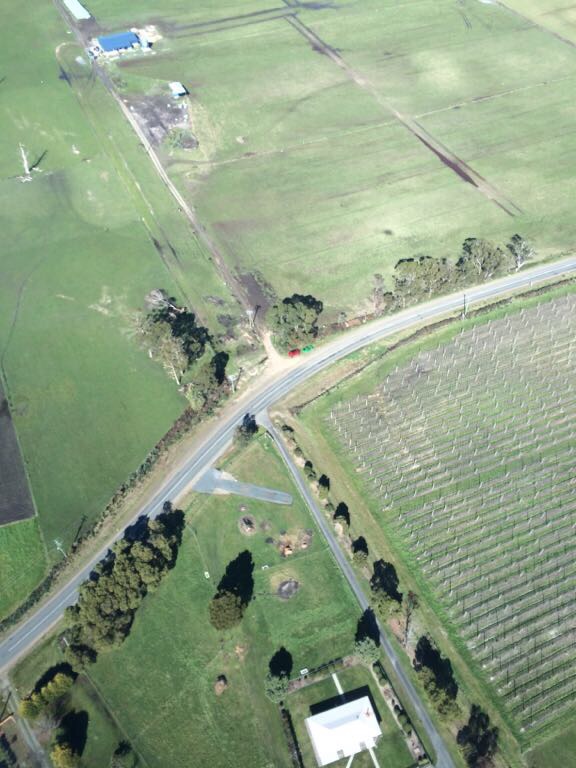Efficiently managing remote pipeline inspections
In response to current economic conditions, asset owners are working harder than ever to make their field operations as efficient as possible. The Tasmanian Gas Pipeline has been able to improve efficiencies within its field data collection process – saving time and money – through an overhaul of its data capture technology.
Since the Tasmanian Gas Pipeline is the only pipeline that supplies natural gas to Tasmania, it’s a critical piece of infrastructure for the state’s gas network, and one that requires continuous monitoring and maintenance.
 The pipeline is owned by Palisade, and Zinfra has operated, maintained and undertaken minor construction activities on it since it was commissioned in 2002, under a field services agreement (FSA).
The pipeline is owned by Palisade, and Zinfra has operated, maintained and undertaken minor construction activities on it since it was commissioned in 2002, under a field services agreement (FSA).
Previously Zinfra used paper forms to collect information from the field during aerial inspections, cathodic protection (CP) surveys and right of way (ROW) fault identification tasks. This information was then manually entered into spreadsheets back in the office, costing extra time and money, and increasing the risk of human error.
However, since 2012, Zinfra has used Mipela software solutions for their operations and maintenance work, including X-Info Suite – consisting of X-Info Connect, X-Info DBYD suite, X-Info Maps – integrated with their asset management software Maintenance Connection.
These technologies are used for automated Dial Before You Dig responses, works management for third party crossings, and to manage communications with landholders along the pipelines.
While these technologies have made operations on the Tasmanian Gas Pipeline more efficient, Hayden McDonald, Managing Director of Mipela GeoSolutions, estimates that the majority of the market is still completing these tasks manually. Alternatively, they are only using software for some parts of the process, rather than looking to systemise the workflow from beginning to end to get a better return on investment.
“It’s all about business process mapping and finding new ways to improve current methods, so if mobile app technology and software is making your inspection or monitoring report more efficient, the technology should be applied to any situation which will achieve that,” Mr McDonald said.
Capturing information in the field
In 2016, Zinfra introduced Mipela’s X-Info Aware mobile data capture app to their X-Info Suite portfolio of products. This allows users to be sent customised forms to capture data for specific tasks from their mobile devices in the field and send the information back to the office in real time via a mobile or wireless network.
If field workers are in remote areas and not in network range, the information is captured and cached, automatically sending it through as soon as the user enters a mobile or wireless network area.
The technology allows photos, videos, audio files, time stamps, GPS tracking and location identification to be captured. It also has a geometry field functionality that allows the user to display and acquisition of point, line and polygon geometry.
Several field data collection tasks have been identified as suitable for replacement with X-Info Aware, allowing the decommissioning of Zinfra’s legacy data collection systems and processes entirely.
Zinfra now assigns tasks to their crews in the field and undertakes regular checks of the pipeline, based on work orders generated in Maintenance Connection, from both the air and ground, to keep informed of issues affecting the pipeline’s operation in real time.
Operator of the Tasmanian Gas Pipeline at Zinfra, Matthew Stewart, said, “With Mipela’s suite of products we were able to tailor what we needed to deliver for our client.
“Over the past four years we have found a solution that not only meets our client’s needs but keeps our field employees up to date with live updates and work flows that save time and keep data current and easier to manage.”
Zinfra/Tasmanian Gas Pipeline Works Coordinator, Graeme Bystersky, said, “We also have other connections that are linked together, including DBYD and Landholder Database, as well as a live system which is very important for our employees to ensure they have the most up to date data when in the field.”
Gaining a competitive edge
Wade Elofson, founder of Powered, an Australian energy and resource company who works with Mipela and others in the energy industry, said looking for ways to make processes more efficient can make a significant impact and give businesses a competitive edge.
“Making processes more efficient is really important to any company in the asset management and energy sector, because if they’re able to perform a task faster and with greater accuracy than someone else, they will win the contract every time,” Mr Elofson said.
“Think about field data capture in regards to helicopter inspections. If workers are spending more time writing everything down on paper, it’s chewing up a lot more fuel and time in the air than if they input data into existing mobile forms.
“A small change like this has the potential to make whole tasks more efficient.”


